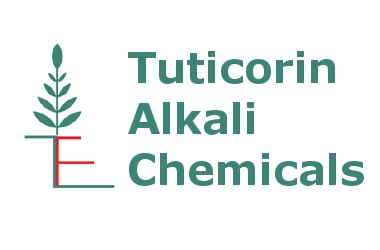Unlike its predecessor, Carbon Capture Storage (CCS), Carbon Capture and Utilization (CCU) boosts profitability by transforming captured CO2 into valuable products. These include advanced chemicals, sustainable fuels, and novel building materials.
However, CCU’s sustainability is questionable due to its high energy requirements. Both approaches aim to reduce atmospheric CO2 levels but face significant economic and efficiency challenges.
This research shares how CCU is close to overcoming these challenges and revolutionizing climate change.
According to the International Energy Agency (IEA), CCU technologies have the potential to capture about 5.6 gigatonnes of CO2 per year by 2050. This could significantly reduce global CO2 emissions and help transition to a low-carbon economy.
To help meet those targets, countries have made rules and regulations.
Regulations on Carbon Capture and Utilization
Many rules and regulations have been implemented to reduce greenhouse gas emissions. One of the most widely used and accepted is the EU Emissions Trading System.
The EU ETS operates on the ‘cap and trade’ principle. A cap limits the total greenhouse gas emissions allowed from facilities and aircraft under the system’s purview. This cap is progressively lowered annually, aligning with the EU’s climate objectives and ensuring a consistent reduction in emissions over time.
The cap is defined in terms of emission permits, each authorizing the emission of one ton of CO2 equivalent (CO2eq). Companies must hand over enough permits each year to cover all their emissions. Failure to do so results in substantial fines.
Companies can also trade allowances with each other as needed. If an installation or operator reduces emissions, they can keep the spare allowances to use or sell them.
These environmental concerns & regulations are driving companies to explore technologies that help solve excessive carbon emission problems.
Challenges of Implementing Carbon Capture and Utilization
Despite CCU technologies’ promising potential, their implementation, especially on a large scale, poses significant challenges.
- Energy Requirements: One of the main hurdles for CCU technologies is their high energy consumption. Capturing and converting carbon dioxide into usable products often requires substantial energy, which can negate the benefits of this energy coming from non-renewable sources.
- Economic Viability: Many CCU technologies are not yet economically competitive without substantial subsidies or carbon pricing mechanisms. The costs associated with the capture, conversion, and marketing of carbon-based products can exceed the revenue generated from these products, making it difficult to achieve commercial viability.
- Market for Carbon-Based Products: Developing a reliable market for carbon-derived products is crucial. The success of CCU depends on creating products that are in demand and can be sold at a competitive price. However, market fluctuations and the availability of cheaper, non-carbon-based alternatives can hinder this.
- Technological Maturity: Many CCU technologies are still in the developmental or pilot stage and have not been proven at scale. Scaling up from laboratory or pilot projects to industrial-scale operations presents significant technical and logistical challenges.
- Regulatory and Policy Frameworks: A significant barrier is the lack of robust regulatory and policy frameworks supporting CCU technology deployment. Effective policies, such as tax breaks, grants, or carbon credits, are needed to incentivize investment in CCU technologies.
Additionally, CCU often involves transnational issues such as capturing carbon transportation, international cooperation, and regulatory standard harmonization. The absence of international collaboration can hinder the development of a global CCU infrastructure.
Despite these challenges, companies are researching how to overcome them and make CCU effective.
Solutions of Carbon Capture and Utilization
1. Amine-based absorbents and conversion to methane
Traditional methods for capturing CO2, like amine scrubbing, use a lot of energy because it’s hard to separate the CO2 once it’s captured. A new approach called Bio-integrated Carbon Capture and Utilization (BICCU) is being introduced.
This method uses the natural abilities of microbes to release CO2 from an amine-based solution and turn it into synthetic natural gas (methane) in one step, using renewable hydrogen. Tests with synthetic and real waste gases from a biogas engine have shown that this method works well with the amine called methyl diethanolamine (MDEA). It handles impurities and oxygen well and can use nearly all the captured CO2 up to certain levels of MDEA.
2. Converting CO2 to Sodium Bicarbonate using Ocean Water
A team of researchers has invented a system that functions like an air filter, capturing carbon dioxide (CO2) from the atmosphere while allowing other gases to pass through. The filter utilizes copper attached to a polymer material to absorb the CO2 molecules from the air flowing through it. Once the filter is saturated, it can be cleaned by passing seawater through it. This process converts the trapped CO2 into sodium bicarbonate, commonly known as baking soda, which dissolves in the seawater.
Releasing this sodium bicarbonate solution into the ocean does not significantly alter its chemistry, and pouring the baking soda solution into the sea doesn’t change its chemistry. If used frequently, it could help reduce ocean acidification, a problem caused by too much CO2 in the ocean.
This technology could be used at power plants and other locations to remove CO2 from the air.
Current methods of capturing CO2 directly from the air are pricey and not very widespread. This new method, which uses plenty of seawater, might be cheaper and more feasible on a large scale.
Experts emphasize that carbon dioxide removal strategies and reducing emissions are critical to meeting climate goals and mitigating the impacts of global warming.
Companies with Commercialized Carbon Capture and Utilization technology
1. Tuticorin Alkali Chemical

The India-based company has effectively showcased the industrial-scale conversion of captured CO2 into baking soda (soda ash). It uses a novel CO2 stripping chemical by Carbonclean. Rather than sequestering the carbon, this method repurposes it into soda ash. It is a substance used in producing glass, detergents, and paper.
This technique turns the waste into a commercially viable product, unlike conventional carbon capture and storage (CCS). It has ecological advantages and economic value.
2. LanzaTech

LanzaTech has developed a remarkable technology that captures carbon emissions from industrial sources like steel mills. It converts these emissions into valuable products such as ethanol and chemicals.
This process leverages gas fermentation technology, wherein microorganisms convert carbon-rich waste gases into ethanol. The ethanol can then be further used to produce sustainable fuels, packaging materials, and other products, contributing to a circular carbon economy.
One of LanzaTech’s significant commercial successes is the Steelanol plant in Ghent, Belgium, which was developed in partnership with ArcelorMittal. This facility captures carbon emissions from the steel production process and converts them into ethanol, marketed under the Carbalyst® brand. The plant produces 80 million liters of ethanol annually, resulting in a significant annual reduction of 125,000 tonnes of carbon emissions.
LanzaTech has also ventured into producing sustainable ethylene through a collaborative project with Technip Energies, which is funded by a substantial investment from the U.S. Department of Energy.
The project aims to decarbonize ethylene production by integrating LanzaTech’s carbon recycling technology with Technip’s Hummingbird® technology, transforming ethanol into ethylene.
Conclusion
Adopting carbon capture and utilization technologies has challenges; however, the potential sustainability benefits are far greater. As industries and policymakers continue recognizing and acting on these benefits, CCU could become a cornerstone for a sustainable and resilient future.
Need help navigating new technology trends and sustainability challenges efficiently?
Get extensive market and patent insights to identify emerging technologies, and prioritize opportunities aligned with your goals. Book a discovery call with our experts by filling out the form below:
Authored By: Kartik and Abhiti, Solutions.










